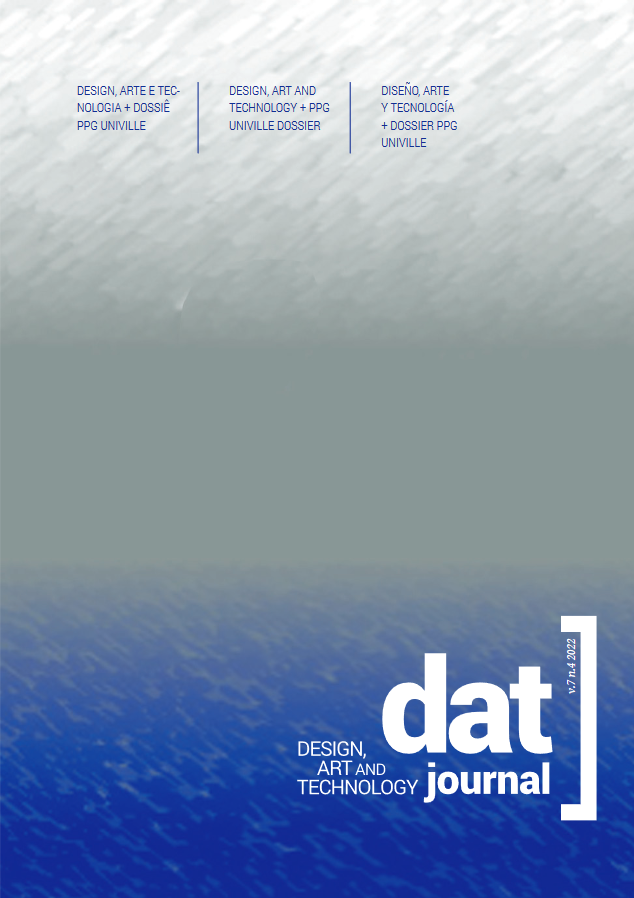Spatial speculation through John Conway’s Game of Life: fostering creativity with autonomous algorithms
DOI:
https://doi.org/10.29147/datjournal.v7i4.646Keywords:
Game of Life, Space Speculation , Blueprint, Architectural ProjectAbstract
This article seeks to present an experiment involving a cellular automaton inspired by John Conway's Game of Life. The developed algorithm uses simple composition rules to generate viability diagrams of single-story single-family homes, considering the amount of social, private and empty spaces. The objective of the experiment is to illustrate a line of thought that seeks to use AI as a creative, aesthetic, imagery, stylistic, linguistic and critical stimulus for the development and advancement of architectural discourse. Through the experiment, a co-authorship relationship was observed in which the algorithm generates a contingent event represented by the feasibility diagram, and the architect reacts to this event by maturing it into a less abstract solution.
Downloads
References
Araghi, S., & R. Stouffs. Exploring Cellular Automata for High-Density Residential BuildingForm Generation. Automation in Construction. 2015, 49 (A): 152–162. DOI: https://doi.org/10.1016/j.autcon.2014.10.007
Cruz Gambardella, C. & Karakiewicz, J. & Kirley, M. Towards the implementation of a composite cellular automata model for the exploration of design space. In S. Chien, S. Choo, M. A. Schnabel, W. Nakapan, M. J. Kim, S. Roudavski (eds.), Living Systems and Micro-Utopias:
Towards Continuous Designing, Proceedings of the 21st International Conference of the Association for Computer-Aided Architectural Design Research in Asia CAADRIA; 2016.
Davis, N.M. Creative Sense-Making: A Cognitive Framework for Quantifying Interaction Dynamics in Co-Creation. Ph.D. Thesis, Georgia Institute of Technology, Atlanta, GA, USA, 2017. DOI: https://doi.org/10.1145/3059454.3059478
Del Campo, Matias; Manninger, Sandra. The Materialism of Architectural Automations: A Critical Interrogation of Automation, Accelerationismo and Ornament. Proceedings of S.Arch Conference, 2019
Devetakovic, M. & Petrusevski, L. & Dabic, M. & Mitrovic, B. Les folies cellulaires: an exploration in architectural design using cellular automata. In: International Conference on Generative Art, 12., Milão, 2009; (p. 181-192).
Gardner, Martin. The Fantastic Combinations of John Conway’s New Solitaire Game of “Life”. Scientific American, 1970, pp. 120-123. DOI: https://doi.org/10.1038/scientificamerican1070-120
Hoffmann, O. On understanding human-computer co-creativity. In Gero, J.S., Maher, M.L., (Eds.), Proceedings of the Computational and Cognitive Models of Creative Design VI: Reprints of International Conference of Computational and Cognitive Models of Creative Design VI, Heron Island, Australia, 2005; (pp. 10–14).
Hoffmann, O. On Modeling Human-Computer Co-Creativity, Knowledge, Information and Creativity Support Systems; Kunifuji, S., Papadopoulos, G.A., Skulimowski, A.M.J., Kacprzyk, J., Eds.; Springer International Publishing: Cham, Switzerland, 2016; pp. 37–48. DOI: https://doi.org/10.1007/978-3-319-27478-2_3
Krawczyk, R. J. Architectural Interpretation of Cellular Automata. Generative Art. 2002.
Lee, Y., & Kim, S.H. Algorithmic Design Paradigm Utilizing Cellular Automata for the Han-ok. Nexus Netw J, 2016, 18, 481–503. https://doi.org/10.1007/s00004-016-0292-x. DOI: https://doi.org/10.1007/s00004-016-0292-x
Schneider, S. & Fischer, J.R. & Koenig R. Rethinking Automated Layout Design: Developing a Creative Evolutionary Design Method for the Layout Problems in Architecture and Urban Design. Des. Comput. Cogn. 2011, ’10, p. 367–86. doi:10.1007/978-94-007-0510-4_20. DOI: https://doi.org/10.1007/978-94-007-0510-4_20
Downloads
Published
How to Cite
Issue
Section
License
Copyright (c) 2022 DAT Journal

This work is licensed under a Creative Commons Attribution 4.0 International License.


























